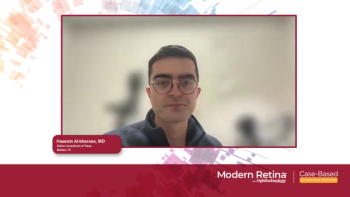
Illuminate trial updates: Additional analyses required for sepofarsen for LCA10
According to the company, post-hoc analyses from Illuminate trial of sepofarsen demonstrate an encouraging efficacy signal when comparing active treatment and sham eyes to their corresponding contralateral eyes across multiple endpoints. The company plans to discuss findings with regulators in Q3.
This week, ProQR Therapeutics N.V. provided an update on its sepofarsen program, following a comprehensive post-hoc analysis of the data from the Phase 2/3 Illuminate trial in people with CEP290-mediated Leber congenital amaurosis 10, or LCA10, a severe inherited retinal disease.
Following the top-line announcement in February that Illuminate, ProQR’s pivotal Phase 2/3 trial of sepofarsen in CEP290-mediated LCA10, did not meet the primary endpoint of Best Corrected Visual Acuity (BCVA) at Month 12 compared to a sham procedure control group, comprehensive post-hoc analyses of the trial were undertaken which revealed:
- No technical errors in the trial conduct, data handling, or the drug product used.
- The overall safety profile of sepofarsen was consistent with earlier trials.
- When the effect in the treatment eye was compared to the untreated contralateral eye in the same patient, at Month 12, a benefit in vision was observed as a mean change from baseline in BCVA of -0.12 logMAR (n = 23) in the sepofarsen treated groups. This effect was not observed in the sham treated group (n = 12) with the same comparison (treated vs. contralateral eye).
- Other endpoints showed similar effect when comparing treatment to contralateral eye, including Full Field Stimulus Testing (FST).
- These findings were supported by the patient reported outcomes (PRO) analyses, based on the Patient Global Impressions-Change (PGI-C) that demonstrated that 61% of patients in the treatment groups reported an improvement in vision, as well as by Visual Function Questionnaire 25 (VFQ-25).
The company noted that the post-hoc analyses showed that the efficacy signal seen with sepofarsen when comparing active treatment and sham eyes to their corresponding contralateral eyes across BCVA, FST, and other endpoints, including PROs, was more consistent with the results seen in earlier findings, where the contralateral eye was used as the control.
Based on these results, ProQR will focus on the following core activities related to sepofarsen:
- In Q3, the Company plans to meet with the EMA and FDA to discuss these data from the Illuminate trial. Following this discussion, ProQR will share an update in Q3 or early Q4, depending on timing of regulatory meetings.
- Based on the recommendation of the Data Safety and Monitoring Committee (DSMC), the Company currently plans to continue Illuminate, which is a 2 year study, the Brighten pediatric study, and Insight, until further regulatory guidance, after which next steps will be determined. No further investments are planned at this time for new trials of sepofarsen or commercial preparations.
Newsletter
Keep your retina practice on the forefront—subscribe for expert analysis and emerging trends in retinal disease management.












































